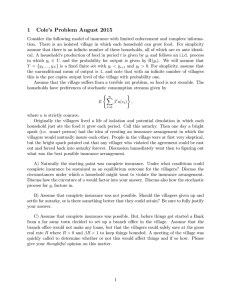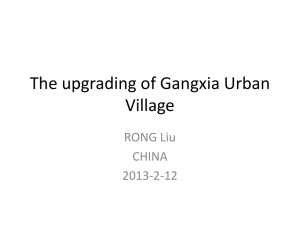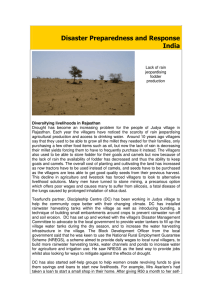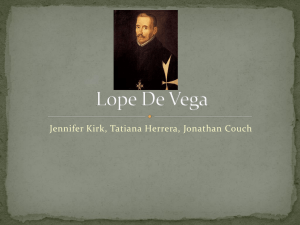Buildon
advertisement
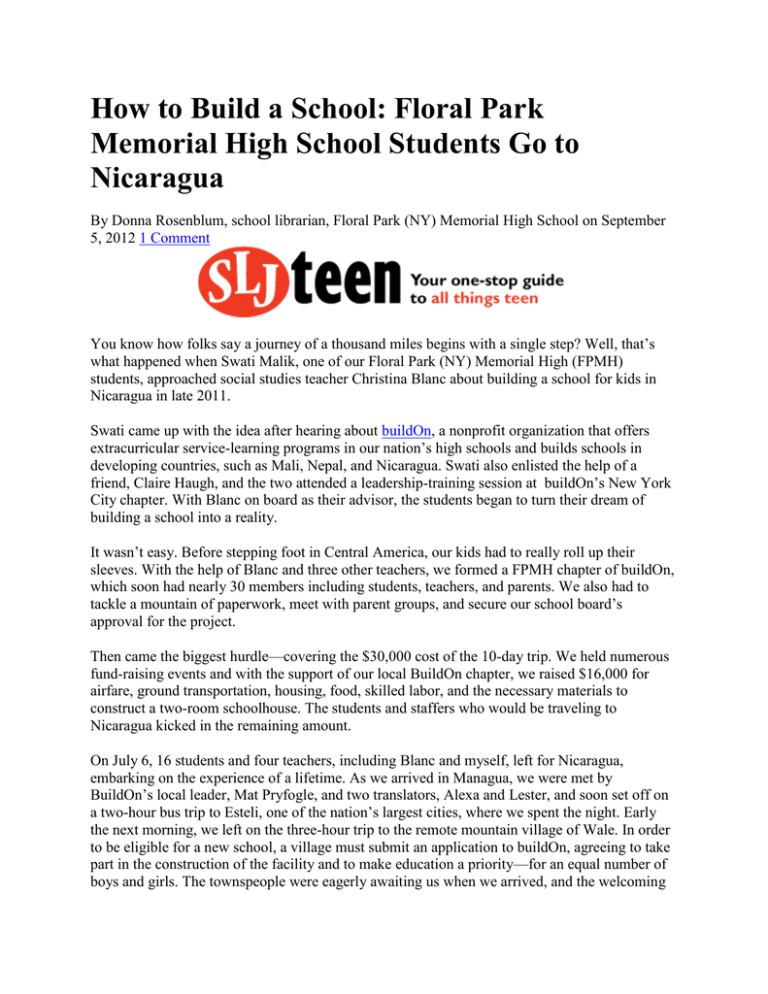
How to Build a School: Floral Park Memorial High School Students Go to Nicaragua By Donna Rosenblum, school librarian, Floral Park (NY) Memorial High School on September 5, 2012 1 Comment You know how folks say a journey of a thousand miles begins with a single step? Well, that’s what happened when Swati Malik, one of our Floral Park (NY) Memorial High (FPMH) students, approached social studies teacher Christina Blanc about building a school for kids in Nicaragua in late 2011. Swati came up with the idea after hearing about buildOn, a nonprofit organization that offers extracurricular service-learning programs in our nation’s high schools and builds schools in developing countries, such as Mali, Nepal, and Nicaragua. Swati also enlisted the help of a friend, Claire Haugh, and the two attended a leadership-training session at buildOn’s New York City chapter. With Blanc on board as their advisor, the students began to turn their dream of building a school into a reality. It wasn’t easy. Before stepping foot in Central America, our kids had to really roll up their sleeves. With the help of Blanc and three other teachers, we formed a FPMH chapter of buildOn, which soon had nearly 30 members including students, teachers, and parents. We also had to tackle a mountain of paperwork, meet with parent groups, and secure our school board’s approval for the project. Then came the biggest hurdle—covering the $30,000 cost of the 10-day trip. We held numerous fund-raising events and with the support of our local BuildOn chapter, we raised $16,000 for airfare, ground transportation, housing, food, skilled labor, and the necessary materials to construct a two-room schoolhouse. The students and staffers who would be traveling to Nicaragua kicked in the remaining amount. On July 6, 16 students and four teachers, including Blanc and myself, left for Nicaragua, embarking on the experience of a lifetime. As we arrived in Managua, we were met by BuildOn’s local leader, Mat Pryfogle, and two translators, Alexa and Lester, and soon set off on a two-hour bus trip to Esteli, one of the nation’s largest cities, where we spent the night. Early the next morning, we left on the three-hour trip to the remote mountain village of Wale. In order to be eligible for a new school, a village must submit an application to buildOn, agreeing to take part in the construction of the facility and to make education a priority—for an equal number of boys and girls. The townspeople were eagerly awaiting us when we arrived, and the welcoming ceremony included the signing of an agreement, or “covenant,” between the international buildOn organization, FPMH’s buildOn chapter, and the local community. The village of Wale consists of 42 families with a population of about 300. While the project was underway, two or three students lived with each host family. Homes are constructed of wood or mud brick with no windows and a tin roof. There’s no running water or electricity and we used outdoor latrines. We bathed using cold river water which was also used to wash our clothes. Even though the villagers do not have material luxuries, they opened their homes to us and shared whatever they had. . During our first week, we worked four-hour shifts, digging holes and trenches for the new school, breaking rocks, carting away the debris, mixing cement, sifting sand, and cutting and shaping steel bars to reinforce the foundation—all without the use of power tools or heavy machinery, since Wale doesn’t have any electricity. After a week of working alongside the villagers, we laid the foundation and began framing the school’s walls. Although there was still a lot to be done when we departed in mid-July, the villagers, with the help of the local BuildOn staff, expect to be finished building the school in this month. The most memorable part of this experience was the bonds we formed with our host families and the other villagers. Words can not express the love and the special connection made with the villagers of Wale. The day before we left, the village planned a special closing ceremony where members of the village and the students spoke and tried to convey our emotions. It was a very moving ceremony that left many in tears. Each villager hugged and thanked us for coming to their village and building the school so their children can have a better future. It was such a humbling moment and one that will stay with us forever. I think I can say for all of us who participated in this trip that we gave of ourselves but received so much more in return. This article was featured in School Library Journal's SLJTeen enewsletter. Subscribe today to have more articles like this delivered to you twice a month for free.


